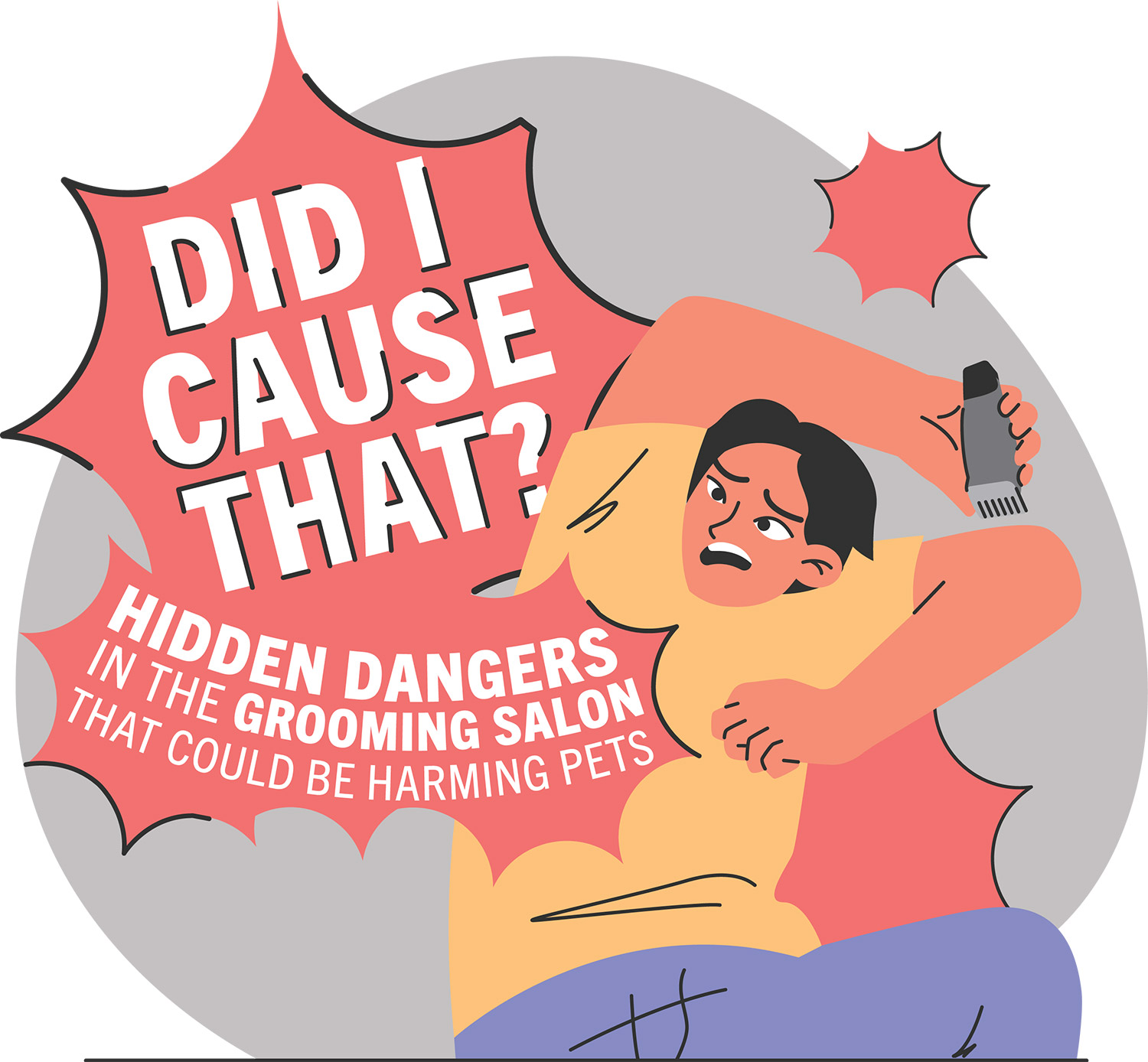
 s pet professionals, our utmost priority is to ensure the safety and wellbeing of the pets we care for, yet harm is sometimes unintentionally inflicted—possibly even more frequently than we might realize. We must remain vigilant and attentive to the basics, as any oversight could harm the very pets we intend to help.
s pet professionals, our utmost priority is to ensure the safety and wellbeing of the pets we care for, yet harm is sometimes unintentionally inflicted—possibly even more frequently than we might realize. We must remain vigilant and attentive to the basics, as any oversight could harm the very pets we intend to help.
We are all aware of the obvious harmful nature of brush burns, clipper burns, and even the unintentional cut from our razor-sharp scissors. We are also cautious about getting water or shampoo in pets’ ears or eyes. Even still, we occasionally need to take a pet to the veterinarian for a squinty eye, whether the dog or groomer caused it. But there are other dangers lurking around that we are often unaware of or take for granted—and these can be as bad, if not worse, and sometimes even fatal. It’s crucial to be constantly cautious and aware of these potential dangers, which include the following.
Two of the more common bacteria species we deal with are Pseudomonas aeruginosa and MRSP (or methicillin-resistant Staph pseudintermedius; MRSA being the human variety). Pseudomonas is present in the soil and Staph pseudintermedius is a common bacteria on a dog’s skin, but when they overgrow or become drug resistant, we have a problem.
Given the right environment, both tend to overgrow, and the medications used to treat these are often toxic. These drugs can potentially complicate the situation or even kill the patient with the treatment. So, if the salon, equipment, towels, cages, bathing systems, etc. are not cleaned between pets, we stand the chance of perpetuating the growth of these organisms and even spreading them from animal to animal.
We have many cleaning modalities you can use to battle these bacteria and fungus, including chemicals, UV lights, sterilizers and even ozone, which work great to clean. However, we have to understand what they can and can’t do and use them frequently enough to prevent the spread of disease.
For example, if you think your UV light is magical and will disinfect the inside of the hinge of your scissors and both sides just by laying them under the light in one position, you don’t understand how the UV light works. It only works on the surface the light shines on. That’s why it is essential that you know the science.
Many groomers also believe they are safe from bacteria and can treat skin infections using shampoo. We must understand that shampoo is for cleaning, and unless it is specifically designed to address bacteria or fungus, it only cleans and does not disinfect. Therefore, a routine shampoo used on infected skin only dilutes the problem but doesn’t kill the organisms. If we are just cleaning and not disinfecting, we may perpetuate the spread of disease by using the wrong technique or products, putting our pet clients in harm’s way.
The condition we underestimate is when the skin is compromised because of a lack of healthy sebum (which provides the protective barrier). So, for example, if the dog hasn’t been bathed for a while, they swim often or alcohols have been used on the skin (dyes, perfumes, some cleansers like ear cleaner, etc.), the sebum may be compromised.
Using harsh products, degreasing (removing the sebum layer) or failure to condition correctly can also compromise the skin barrier and make the pets more prone to infections. So, in simple terms, if the skin is raw with harsh products (or other things that compromise the sebum layer) and then bacteria are poured onto the wound (in the form of premixed shampoo), we will get an infection.
This often leads to deep infections like folliculitis (infection of the hair follicle) or furunculosis (this is considered a deeper type of infection, generally looking like boils or groups of abscesses associated with the hair follicles). While not the only way folliculitis/furunculosis is caused in pets, it is probably one of the common ways.
These examples go to show that we must be diligent about thinking through and preventing any hazard to the pets in our care, whether seen or unseen, so we are not the source of skin infections and misery for our pet clients.
Dr. Cliff Faver graduated with a BS in Biology/BA in Chemistry before getting a Veterinary degree in 1987. He is the past owner of Animal Health Services in Cave Creek, Arizona and now the US distributor for Iv San Bernard products, teaches the ISB Pet Aesthetician Certification program, and speaks internationally on hair and skin. His passion is to merge groomers and veterinarians to aid in helping and healing pets. He is also a member of AVMA, AAHA, AZVMA, Board member with Burbank Kennel Club, and has served on Novartis Lead Committee, Hill’s International Global Veterinary Board, and a Veterinary Management Group.




